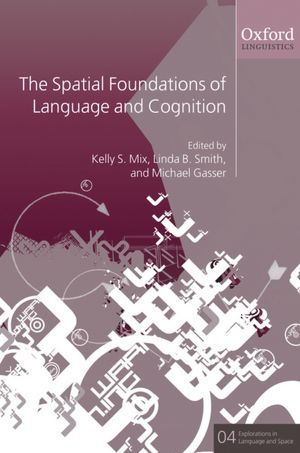The Spatial Foundations of Language and Cognition: Thinking Through Space
This book presents recent research on the role of space as a mechanism in language use and learning. It proceeds from the notion that cognition in real time, developmental time, and over evolutionary time occurs in space, and that the physical properties of space may provide insights into basic cognitive processes, including memory, attention, action, and perception. It looks at how physical space and landmarks are used in cognitive representations and serve as the basis of human cognition in a range of core mechanisms to index memories and ground meanings that are not themselves explicitly about space. The editors have brought together experimental psychologists, computer scientists, robotocists, linguists, and researchers in child language in order to consider the nature and applications of this research and in particular its implications for understanding the processes involved in language acquisition.
1142860740
The Spatial Foundations of Language and Cognition: Thinking Through Space
This book presents recent research on the role of space as a mechanism in language use and learning. It proceeds from the notion that cognition in real time, developmental time, and over evolutionary time occurs in space, and that the physical properties of space may provide insights into basic cognitive processes, including memory, attention, action, and perception. It looks at how physical space and landmarks are used in cognitive representations and serve as the basis of human cognition in a range of core mechanisms to index memories and ground meanings that are not themselves explicitly about space. The editors have brought together experimental psychologists, computer scientists, robotocists, linguists, and researchers in child language in order to consider the nature and applications of this research and in particular its implications for understanding the processes involved in language acquisition.
70.69
In Stock
5
1

The Spatial Foundations of Language and Cognition: Thinking Through Space

The Spatial Foundations of Language and Cognition: Thinking Through Space
70.69
In Stock

Product Details
| ISBN-13: | 9780191609565 |
|---|---|
| Publisher: | OUP Oxford |
| Publication date: | 12/24/2009 |
| Series: | Explorations in Language and Space , #4 |
| Sold by: | Barnes & Noble |
| Format: | eBook |
| File size: | 4 MB |
About the Author
From the B&N Reads Blog
